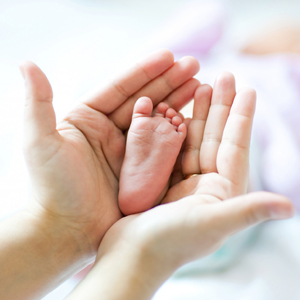Asherman’s Syndrome
Giggles Hospital’s Comprehensive Approach to Asherman’s Syndrome
Asherman syndrome is a rare disorder that affects the uterus, causing the formation of scar tissue or adhesions due to injury. In severe cases, the front and back walls of the uterus may fuse together, while in milder cases, adhesions may be limited to specific areas. The adhesions can vary in number and distribution, ranging from numerous and dispersed to few and fused.
What are the Symptoms of Asherman Syndrome?
Asherman syndrome often causes irregular or absent menstrual periods. Additionally, some individuals experience pain without any bleeding during their expected menstrual cycle. A few common symptoms are as follows –
- Experiencing hypomenorrhea or very mild periods.
- Having irregular uterine bleeding or not having a period (amenorrhea).
- Experiencing significant pelvic pain or cramps.
- Having trouble conceiving or maintaining pregnancy.
You may be menstruating, but the presence of scar tissue may obstruct the uterine opening, preventing the blood from exiting.
What are the causes of Asherman Syndrome?
Asherman syndrome is commonly triggered by the scraping or removal of tissue during a medical procedure called dilation and curettage (D&C). The procedure is typically carried out following an elective abortion, a miscarriage, or when a retained placenta needs to be removed after delivery. The operation causes damage to the uterine walls, which leads to a scar.
Infections of the endometrium, such as genital TB, are another cause of Asherman Syndrome. Genital tuberculosis occurs when tuberculosis bacteria infect the reproductive system. Asherman syndrome situations differ from person to person. Hence determining the etiology should be done on a case-by-case basis.
How is Asherman Syndrome Diagnosed?
The following imaging exams can be used to identify Asherman’s syndrome:
Ultrasound
Ultrasound imaging is a non-invasive technique that uses sound waves to examine the internal organs of the body. It can be conducted either externally on the skin or internally using a transvaginal ultrasound, which involves inserting a small wand into the vagina.
Hysteroscopy
Hysteroscopy is a procedure where a thin instrument with a camera is inserted through the vagina, cervix, and uterus to visualize and examine the uterine cavity. It provides a detailed view of the uterus and can also be used for the treatment of Asherman’s syndrome, if necessary.
Saline infusion sonography
This imaging procedure produces a clear image of the interior of your uterus using ultrasonography and a saline solution (a solution made of salt and water). Your uterus will expand due to the fluid, allowing your doctor to observe the contours and issues in your uterine cavity. This enables your doctor to examine both the inside and outside of your reproductive organs in great detail.
How is Asherman Syndrome Treated?
Operative hysteroscopy is a surgical treatment doctors might use to treat Asherman syndrome. A doctor uses a hysteroscope with small surgical tools attached to the end to cut through adhesions. For the procedure, a doctor will provide general anesthesia to you.
Following the treatment, the doctor will give you estrogen tablets to enhance the quality of the uterine lining as well as antibiotics to avoid infection. After that, the surgeon will conduct another hysteroscopy to ensure that the procedure was successful and that there were no adhesions in your uterus. After undergoing therapy for Asherman syndrome, doctors often recommend waiting for a year before attempting pregnancy to ensure that adhesions do not reoccur. If pregnancy is not a goal and the condition is not causing pain, treatment may not be necessary.
Why Choose Giggles?
Asherman syndrome is a serious condition that you must immediately attend to. Visit Giggles Hospitals ,Women And Children Hospital in Kukatpally for a comprehensive checkup and treatment for your condition. Our team of experts is dedicated to helping you achieve optimal health and well-being.
At Giggles Gynecologist hospital, we value our patients and take utmost care of their well-being. We are proficient with all fertility and maternity related issues and conditions.




